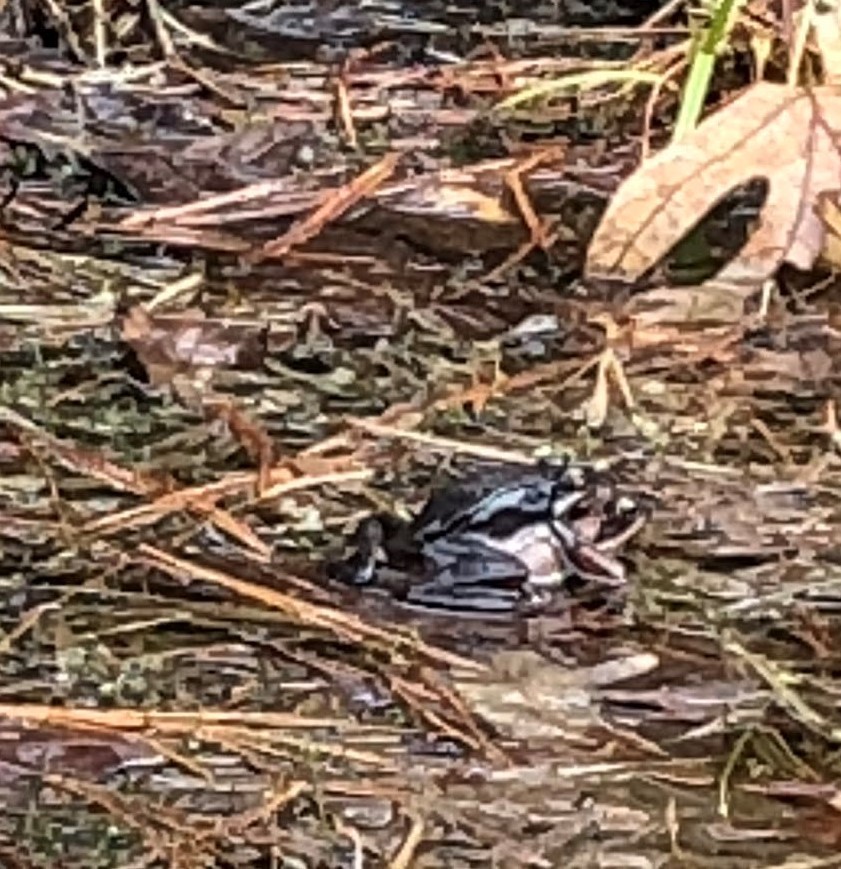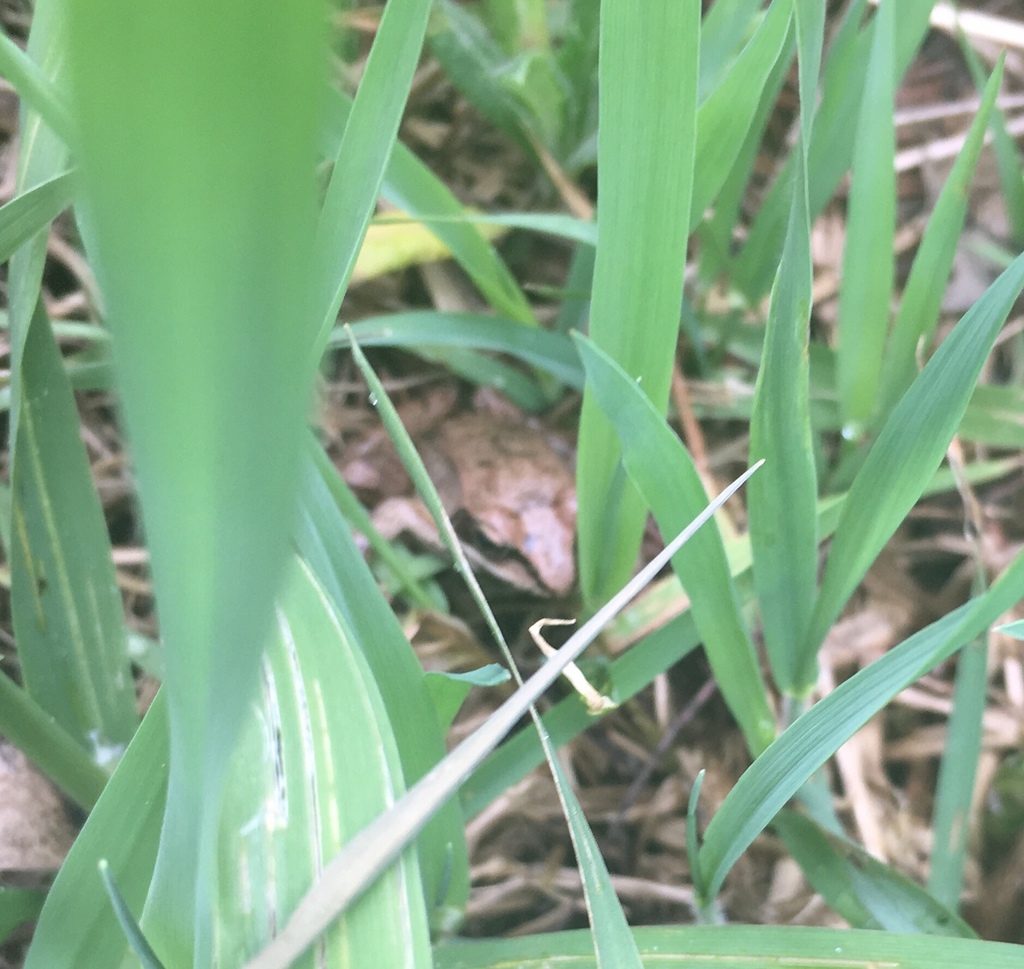Witch Hazels at Wellesley
Walking through the woods on the path around Lake Waban in the early spring, you might hear a chorus of quacking. A little exploration might lead you to find the small amphibian responsible for this cacophony: the Wood Frog (Lithobates sylvaticus) which breeds in at least four wetlands across Wellesley’s campus.
Wood frog chorus at Wellesley’s Kettle Pool
Wood frogs emerge from the woods, where they spend the winter frozen underneath leaf litter, in early spring to begin their annual breeding cycle, migrating to small, temporary water bodies called vernal pools. Wood frogs, like many frogs and salamanders, have evolved breeding strategies to rely exclusively on these ephemeral pools, which don’t support fish populations because they fill with water for only part of the year before drying out, protecting the eggs from fish predation.

A male and a female frog in amplexus in Wellesley’s Kettle Pool. In this position, the female lays eggs which the male promptly fertilizes.
Wellesley College’s campus is home to this critical habitat. There are two certified vernal pools on the Wellesley landscape recognized by the Massachusetts Natural Heritage and Endangered Species Program, and we documented breeding wood frogs in these certified pools this spring. Records show that wood frogs have used these two pools for decades—in the early 1990s Marcy Thomas, Instructor in Biology, observed evidence of breeding wood frog populations and helped certify the vernal pools.

An adult wood frog observed at Wellesley in May 2018.
Wood frogs are also found in the “Kettle Pool,” an old concrete-lined Botanic Gardens water feature and the “Maple Swamp” which is a natural wetland, but is supplemented with water pumped from the college's maintenance tunnels. While these two pools are not officially certified due to the heavy influence of humans, earlier this March we found eggs in the pools, evidence that both host breeding wood frogs. These wetlands force us to think a little more broadly about how to conceptualize biodiversity in the built environment at Wellesley, a landscape highly influenced by human activities.

Wood frogs breed at four pools across Wellesley College’s campus: A) Lake Waban Pool, B) Maple Swamp C) Kettle Pool and D) Fuller Brook Pool
The wood frog’s annual breeding ritual occurs in careful consortium with the signals of spring at Wellesley, as warming temperatures trigger mass migrations to the vernal pools. The process begins with a loud chorus produced by adult males to attract females. This gathering of adult frogs continues for around three weeks, with females each leaving behind a mass of eggs before all adults retreat back into the woods and nearby meadows. Each egg mass contains 1000 to 3000 eggs, from which tadpoles emerge 9 to 30 days after the female frogs lay the eggs.
This early spring flurry of commotion and chorus is a crucial phase in the life history of the wood frog at Wellesley and beyond. Wellesley isn’t the only place where amphibians are emerging from their winter retreats, gathering in spring chorus, often to attract mates. Have you heard any frogs recently? Share an audio recording on iNaturalist. Happy observing!